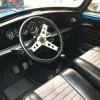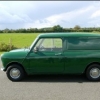I guess if you're read Vizard you already know Inno conrods are stronger than standard rods with extra strengthening ribs in there. If you're not building a full on race engine I'm not sure I would bother with lightening them. All you risk is making them weaker, getting them all balanced will probably gain you the same without the risk.
that is true....I have Inno conrods but searching and reading a lot what many wise man wrote here and at other places I came to the conclusion that actually any Mini conrod is good enough for up to 100HP for engine that rews up to 6500 - 7000 (not for race) and even for much stronger turbo engines with lower CR and lower RPM.
A+ conrods are already light enough and more than we may need for 99% of non-race builds.
Inno conrods are stronger and can be lightened all the way to A+ size and still will be stronger than we need.
A conrods are heavy but stronger than A+ and again if carefully checked, lightened with good balance, finish and polishing are stronger than we may need and are far from the weakest engine point especially if used with ARP bolts and that is my plan.
I will start working on two sets of conrods, one Inno and one pre A+ and plan to make them similar in size and weight - at around 680grams. As said before it is more my personal target than may be a real need. Will use good bolts and do not see any chance they may be a weak point.
MED is lightening A+ conrods to 620grams and they are still reliable - do not plan to go anywhere near that (also have a set of A+ conrods but will only balance them and use for my third build).
I think that Crankshaft is more critical part than conrod - and plan to work a lot on it too - so that may be a bigger challenge ![]()
![]() .
.
Edited by Inno, 14 May 2019 - 05:47 PM.



















